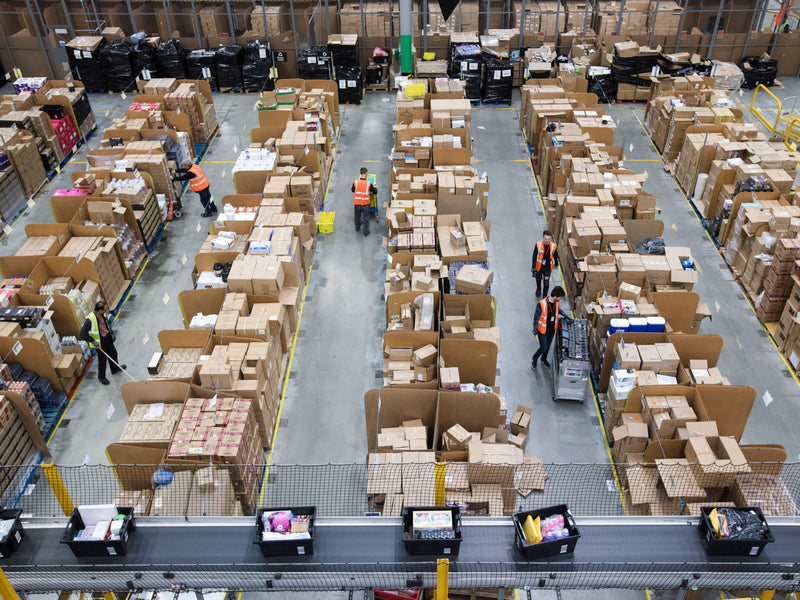Introduction
Strategy decks inspire with hockey-stick forecasts and margin step-ups. Yet digital and direct-to-consumer (DTC) brands soon learn that execution, not vision, decides whether those slides become reality. Paid acquisition costs shift daily, international duty rules change quarterly, and fulfilment costs spike the moment a TikTok post goes viral. When that happens, a glossy report without on-site operators gathers dust.
Private-equity investors now recognise the problem. Over the past two years most funds have invited operating partners into diligence calls, and founders preparing for exit ask potential buyers how they will help execute, not just advise. eComplete’s own numbers confirm the shift: of the 36 mandates we delivered in 2024, 70 per cent combined advisory insight with hands-on resource across trading, supply chain, and data.
This article explains why digital and DTC brands need operators who own numbers inside the business. It explores execution pitfalls, shares live metrics, and provides a checklist for choosing an operator-led partner. Whether you are a founder tightening an exit story or a PE operating partner with year-one value-creation targets, you will finish with an action plan that turns strategy into profit.
The Execution Gap
Digital commerce changes faster than traditional retail. Algorithms update overnight, logistics strikes halt fulfilment with twelve hours’ notice, and privacy laws alter data flows each quarter. Strategic advisors excel at identifying where to play, but their recommendations date quickly when real-world variables move daily.
|
Typical recommendation |
Real-world obstacle |
Operator solution |
|
Cut CAC through creative testing |
Creative team manages two variations a month |
Embed performance designers to ship eight variations a week |
|
Lift international revenue to 25 per cent |
Manual VAT and duty process causes 14-day delays |
Deploy landed-cost engine and cross-border 3PL |
|
Raise gross margin five points via own-brand |
Supply chain lacks MOQ leverage |
Negotiate factory slots and oversee new packaging |
Three common pitfalls
-
Fragmented data
-
Shopify, 3PL portals, and ad APIs seldom align. Operators integrate data sources so management sees SKU-level truth.
-
Resource misalignment
Existing staff already juggle stock and launches. Operators bring interim talent so plans meet calendars.
-
Incentive mismatch
Advisory fees end when slides land. Operators link remuneration to contribution margin, inventory turns, and growth.
“Our consultants told us to internationalise. eComplete built the duty engine, launched three Shopify Markets, and hit break-even in month five.”
CEO, mid-market beauty brand
Six Pillars Operators Tackle First
|
Pillar |
KPI |
Early-stage action |
90-day impact |
|
Unit economics |
Contribution margin |
Rebuild cost-to-serve by SKU |
Margin visibility and quick pricing wins |
|
Acquisition efficiency |
LTV:CAC |
Audit paid mix and discounts |
12-18 per cent CAC reduction |
|
Supply chain resilience |
Fulfilment cost per order |
Benchmark pick fees and carrier rates |
Up to 1.5 margin points saved |
|
International expansion |
Revenue outside core market |
Map duty, payment, and logistics stack |
New market live inside 60 days |
|
Data infrastructure |
Reporting latency |
Connect Shopify, ERP, ad APIs |
Daily dashboards |
|
Talent deployment |
Org gaps |
Second interim CFO, growth lead, or supply-chain head |
Double leadership bandwidth with no head-hunter fee |
Practical tip
Prioritise pillars that unlock the next pillar. Margin clarity often precedes CAC optimisation, because you must know permissible spend before scaling.
Case Studies
Own-brand Mix
A European wellness retailer generated only 32 per cent of sales from own-brand SKUs. Advisory playbooks targeted 70 per cent in three years; eComplete embedded a procurement lead and trading analyst.
-
Secured exclusive factory slots, cutting lead times six weeks.
-
Redesigned packaging, lowering volumetric weight 14 per cent.
-
Introduced margin gates for promotions.
Outcomes
-
Own-brand mix rose to 91 per cent in 30 months.
-
Gross margin improved 640 basis points.
-
EBITDA rose £4.8 million year on year.
Rapid International Rollout
NatureCan planned five new markets but lacked registrations and fulfilment partners. eComplete created an international P&L template and launch squad.
-
Automated landed-cost pricing through Shopify Markets and Avalara.
-
Negotiated multi-node 3PL with duty-paid inventory.
-
Localised creative in seven languages.
Outcomes
-
Forty live territories within five years.
-
38 per cent of revenue now outside the UK.
-
Payback on international CAC under three months.
Framework for Selecting an Operator-Led Partner
-
Define success metrics
Contribution margin plus four points; CAC payback under 90 days; inventory turn above 4.5.
-
Assess capability
|
Question |
What to look for |
|
Have they run P&Ls? |
Operators with full accountability |
|
Do they embed resource? |
Interim CFOs, growth leads, supply-chain heads on day one |
|
Can they surface data? |
Dashboards live in under 30 days |
|
Are incentives aligned? |
Fees or equity linked to KPI targets |
-
Validate track record
Ask for anonymised before-and-after numbers on margin, CAC, and working capital.
-
Clarify cultural fit
Operators must work inside your Slack, not just send PDFs.
Conclusion
Digital and DTC brands face volatile CAC, tight fulfilment economics, and complex international rules. Strategy guides direction, but execution delivers profit. Specialist operators take P&L responsibility, deploy talent immediately, and own the dashboards that steer the ship.
eComplete’s operator model has delivered margin gains, CAC reductions, and accelerated global launches for mid-market consumer brands and PE funds. If your plan needs boots on the ground, an advisory deck alone will not close the execution gap.
Add execution insight before the ink dries. We support funds during diligence, not just post-close.



